The Great Lakes are a series of five interconnected freshwater lakes that straddle the border between the United States and Canada. These lakes—Superior, Michigan, Huron, Erie, and Ontario—together form the largest group of freshwater lakes on the planet, covering an impressive 233,099 square kilometres (90,000 square miles). But beyond their immense surface area, the Great Lakes are a paradise for scuba divers, offering a blend of natural beauty, rich history, and underwater wonders.
Individually, each of the Great Lakes is awe-inspiring, but collectively, they hold more freshwater than any other system in the world. To put their scale into perspective, if the water from the Great Lakes were released, it would submerge the entire continental United States under 2.9 metres (9.5 feet) of water or cover all of North America in 1 metre (3.4 feet). Lake Superior alone, the largest of the five, stretches over 480 kilometres (300 miles) from east to west.
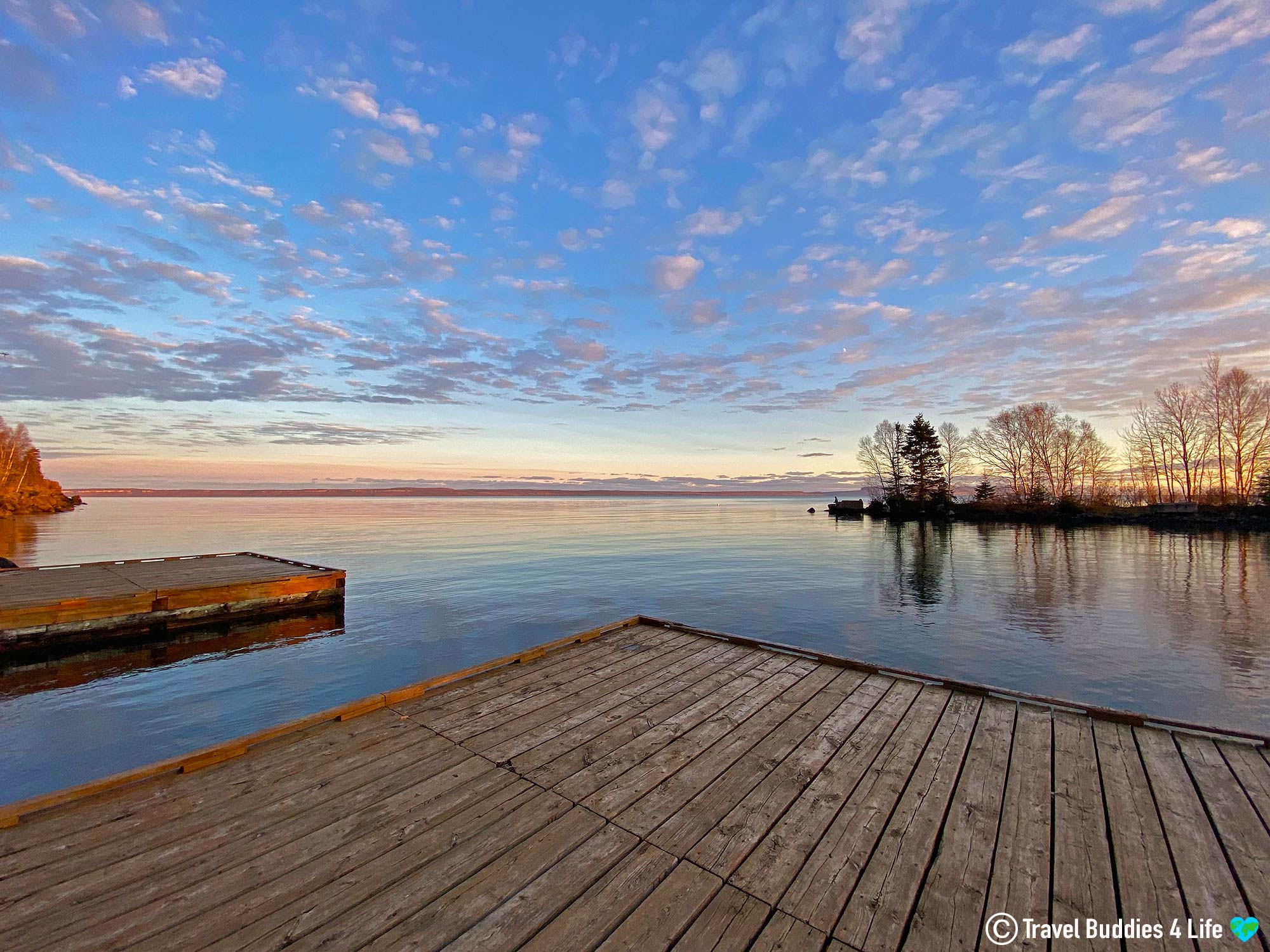
Beyond their immensity and sheer beauty, the Great Lakes are a top destination for scuba divers seeking adventure. For one, the underwater landscapes of the Great Lakes are as diverse as their shorelines. Along the northern reaches of Lake Superior and Lake Michigan, divers can explore dramatic underwater cliffs, rocky formations, and submerged islands. These rugged features contrast with the southern areas of Lakes Michigan and Erie, where remnants of industrial history, including ageing shipwrecks, lie hidden beneath the surface. These underwater relics offer divers a glimpse into the region’s past.
Whether you’re drawn to the historical allure of submerged shipwrecks, the ecological diversity of their waters, or the serene beauty of their underwater landscapes, the Great Lakes offer something for every diver. These inland seas are not only a bucket-list destination for divers but also a place where each dive promises to leave a lasting impression.
The Great Lakes are a unique freshwater system, interconnected by canals and waterways that allow water to flow from these vast basins to the St. Lawrence Seaway and eventually the Atlantic Ocean. Here’s a closer look at each of the Great Lakes from a scuba diver’s perspective:
Lake Ontario, the easternmost of the Great Lakes, is a captivating destination for scuba divers, offering a blend of natural beauty, historical intrigue, and diverse underwater exploration. Encompassing over 18,900 square kilometres (7,300 square miles) and bordered by New York and Ontario, Lake Ontario’s 1,146 kilometres (712 miles) of shoreline are home to vibrant communities, including the bustling metropolis of Toronto. While Toronto’s iconic skyline may dominate the city’s image, beneath the surface of Lake Ontario lies an underwater world that beckons divers from around the globe. Scuba enthusiasts are drawn to the lake’s depths, where they can discover a realm of shipwrecks, artificial reefs, and vibrant fish life.
The connection between Lake Ontario and the Atlantic Ocean through the St. Lawrence River not only enhances its ecological significance but also opens up a variety of diving opportunities. Canadian sites like the shipwrecks of Brockville, Kingston and Hamilton Harbour offer fascinating glimpses into the region’s maritime history, with vessels such as the Wolfe Islander II, the Conestoga and the Tiller serving as both historical artifacts and thriving habitats for aquatic species. Meanwhile, On the US side, Rochester’s submerged dive park provides divers with the chance to explore artificial reefs teeming with life and the Seaways Trail, which includes five diving sites along the 730-kilometre (454-mile) Seaway Trail Scenic Byway is another dive attraction.
Lake Ontario’s waters, though less nutrient-rich than those of Lake Erie, still host a variety of fish species, making it an intriguing dive location for those interested in freshwater ecosystems. From rocky shores to underwater cliffs to sunken schooners, Lake Ontario offers a diverse range of diving experiences that cater to both history buffs and fauna enthusiasts alike.
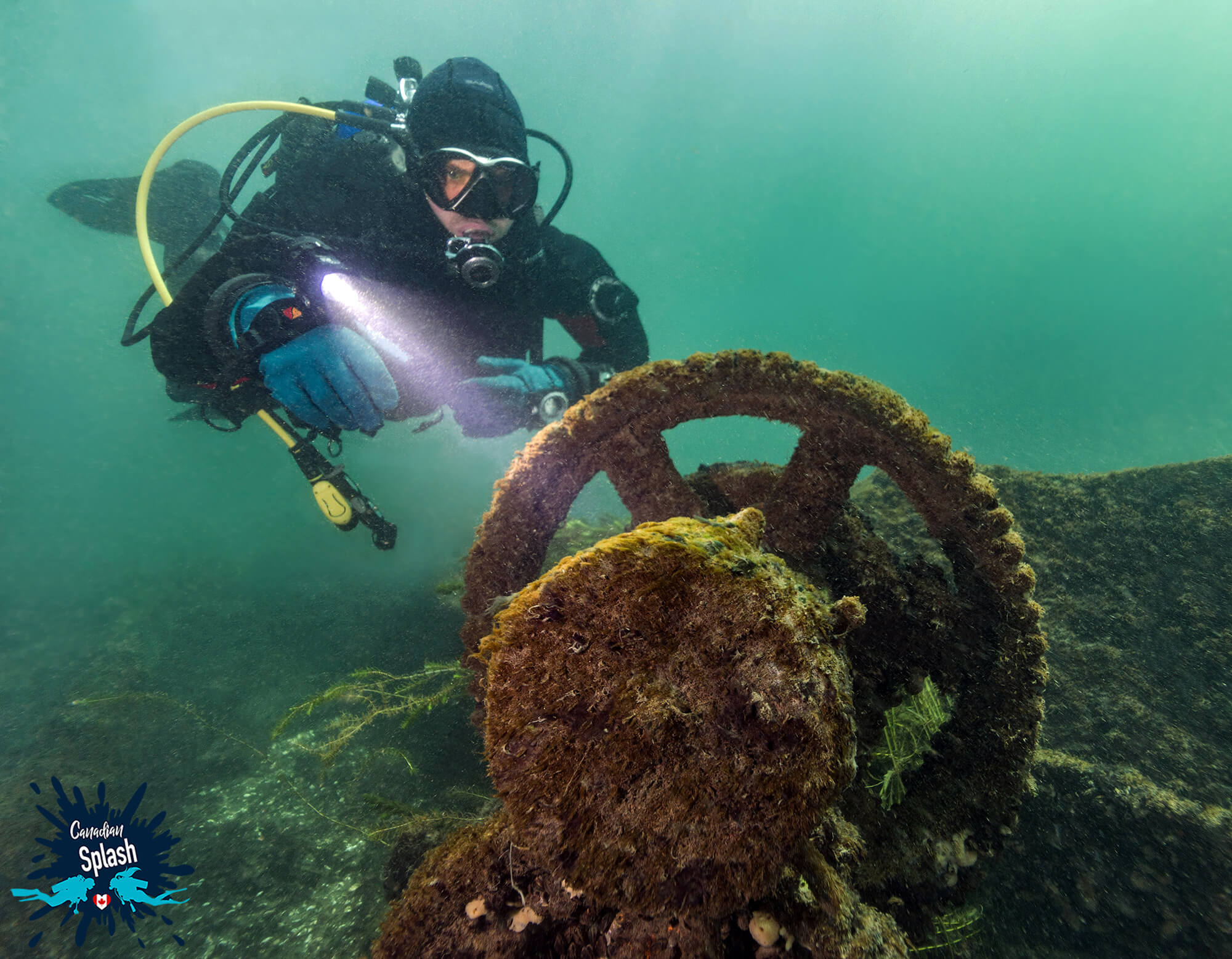
Lake Erie, the shallowest and warmest of the Great Lakes, is a diver’s paradise, offering natural splendour blended with historical intrigue and challenging weather conditions. Despite its relatively shallow depth, reaching a maximum of 64 metres (210 feet), Lake Erie is known for its fierce weather, particularly due to its east-west orientation and long fetch, which can turn calm waters into treacherous waves in a matter of hours. This dramatic weather has contributed to the lake’s rich collection of shipwrecks, many of which lie preserved beneath the surface, offering divers of all levels the chance to explore submerged pieces of history.
Bordered by the US’s Michigan, Ohio, Pennsylvania, New York, and Canada’s Ontario, Lake Erie’s 388-kilometre (241-mile) stretch from end to end provides a vast area for underwater exploration. The lake’s three distinct basins offer a variety of environments. The nutrient-rich waters of the western basin are ideal for spotting diverse fish species. The cooler, deeper waters of the eastern basin are home to well-preserved wrecks near Buffalo, New York. Notable wrecks such as the John J. Boland, a steel bulk freighter resting at 40 metres (130 feet), and the Washington Irving, a schooner lying in 37 metres (120 feet) of water, provide fascinating dive sites for those with the proper training and experience. The central basin has an average depth of 18 metres (60 feet) and merges the east and west sides together, and is a great fishing ground as the topography shelves off causing fish to aggregate at these drop offs.
Lake Erie’s history of pollution and subsequent recovery efforts adds another layer of interest for divers who are passionate about environmental conservation. The lake’s significance extends beyond its underwater attractions; it is home to the largest commercial fishery among the Great Lakes, and its coastal wetlands, such as those at Point Pelee, are crucial stopovers for migratory birds, further enriching the lake’s ecological diversity. For those interested in maritime history, Lake Erie also boasts the U.S. Brig Niagara, a replica of a War of 1812 ship, and the Erie Maritime Museum, offering insights into the lake’s pivotal role in the region’s development.
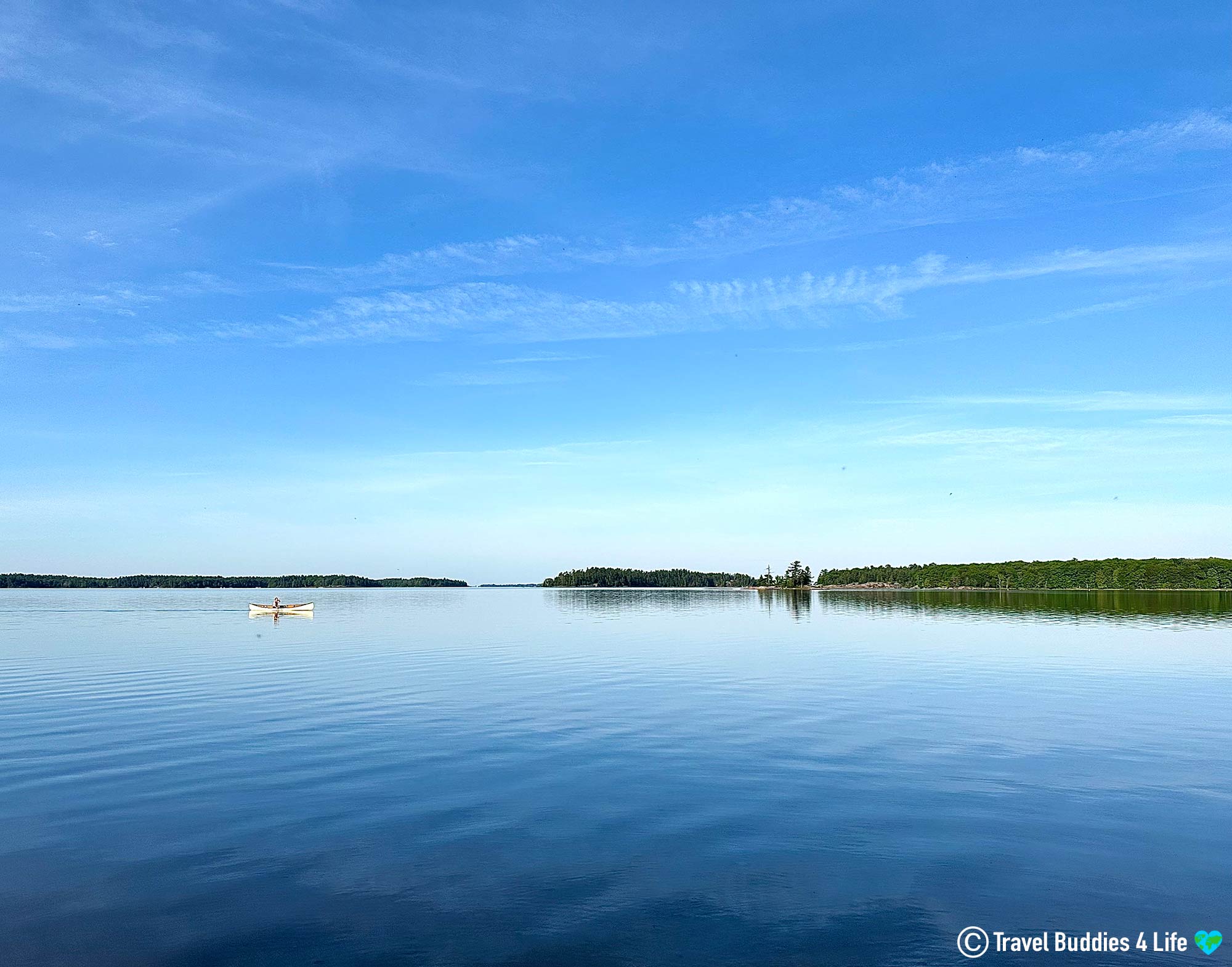
Lake Huron, the second-largest of the Great Lakes, is a premier destination for divers, renowned for its pristine waters, stunning underwater landscapes, and rich historical significance. Spanning the shores of Michigan and Ontario, Lake Huron offers over 6164 kilometres (3,830 miles) of coastline, dotted with countless islands and some of the best diving spots in North America. The northern part of Lake Huron, particularly around Tobermory and the Fathom Five National Marine Park, is a diver’s paradise. Here, crystal-clear waters with visibility up to 30 metres (100 feet) reveal a fascinating underwater world of submerged forests, limestone shoals, and over 20 well-preserved shipwrecks. This area, known as Canada’s premier dive destination, is also home to Flowerpot Island and features sheer cliffs, massive underwater caves, and historical shipwrecks lying at depths ranging from 3 to 46 metres (10 to 150 feet), making it ideal for both novice and experienced divers.
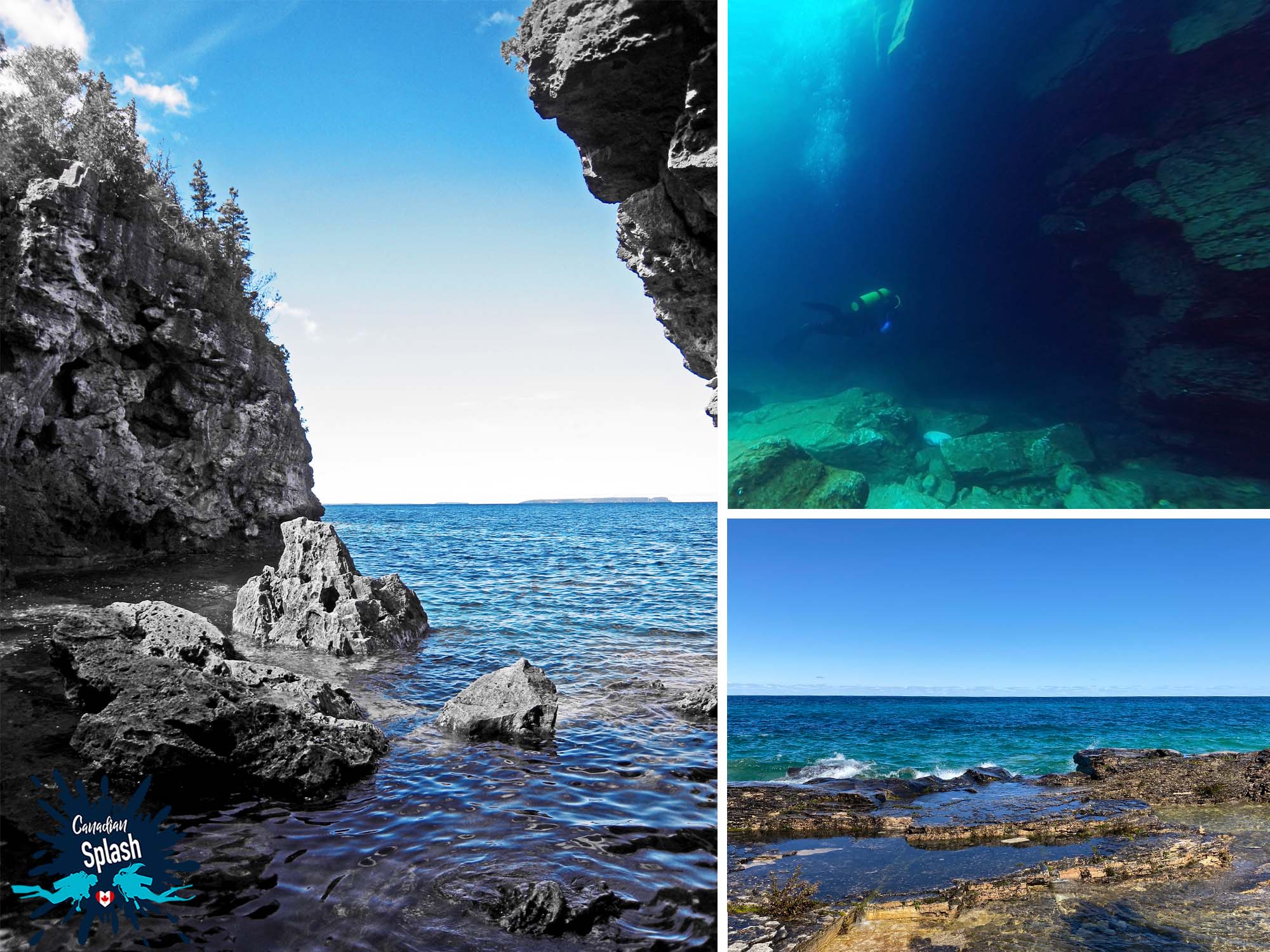
Lake Huron’s southern US shores, especially around the Sanilac Shores and Thumb Area Bottomland preserves, provide equally exciting diving opportunities. These regions are once again famous for their collection of shipwrecks, preserved by the lake’s freshwater and clear conditions, which offer excellent visibility—often up to 15 metres (50 feet). The Sanilac Shores Underwater Preserve, covering 422 square kilometres (163 square miles), is home to 17 accessible shipwrecks, including the Regina, a 76-metre (250-foot) steel package freighter that sank during the Great Storm of 1913, and the Sport, a 17-metre (57-foot) tugboat marked as Michigan’s first underwater historical site. The Thumb Area Bottomland Preserve, extending from Port Austin to Harbor Beach, features 19 major wrecks in deeper waters 30-60 metres (100-200 feet), including the Philadelphia, a 72-metre (236-foot) steamer, and the John McGean, a large steel freighter that lies upside down in 59-metre (195 feet) of water.
Another must-visit site is the Thunder Bay National Marine Sanctuary in Alpena, which houses over 100 historic shipwrecks within its waters. Among the most famous is the Montana, a 72-metre (235-foot) sidewheel steamer that sank after a fire, now resting in 20 metres (65 feet) of water and offering a spectacular dive for both beginners and experienced divers. The sanctuary is not only a treasure trove for wreck divers but also a hub for maritime research and preservation, with the Great Lakes Maritime Heritage Center providing insights into the history and significance of the wrecks.
These underwater preserves provide a range of diving experiences, from shallow wrecks suitable for beginners to deeper, more challenging sites for advanced divers. The cold, clear waters of Lake Huron not only preserve these wrecks but also create an environment where unusual species like the longnose gar and colourful sunfish thrive, adding to the lake’s biodiversity. Whether exploring the wrecks in the north around Tobermory or diving into the history-laden waters of the southern preserves, Lake Huron offers an unparalleled mixture of adventure and tranquillity.
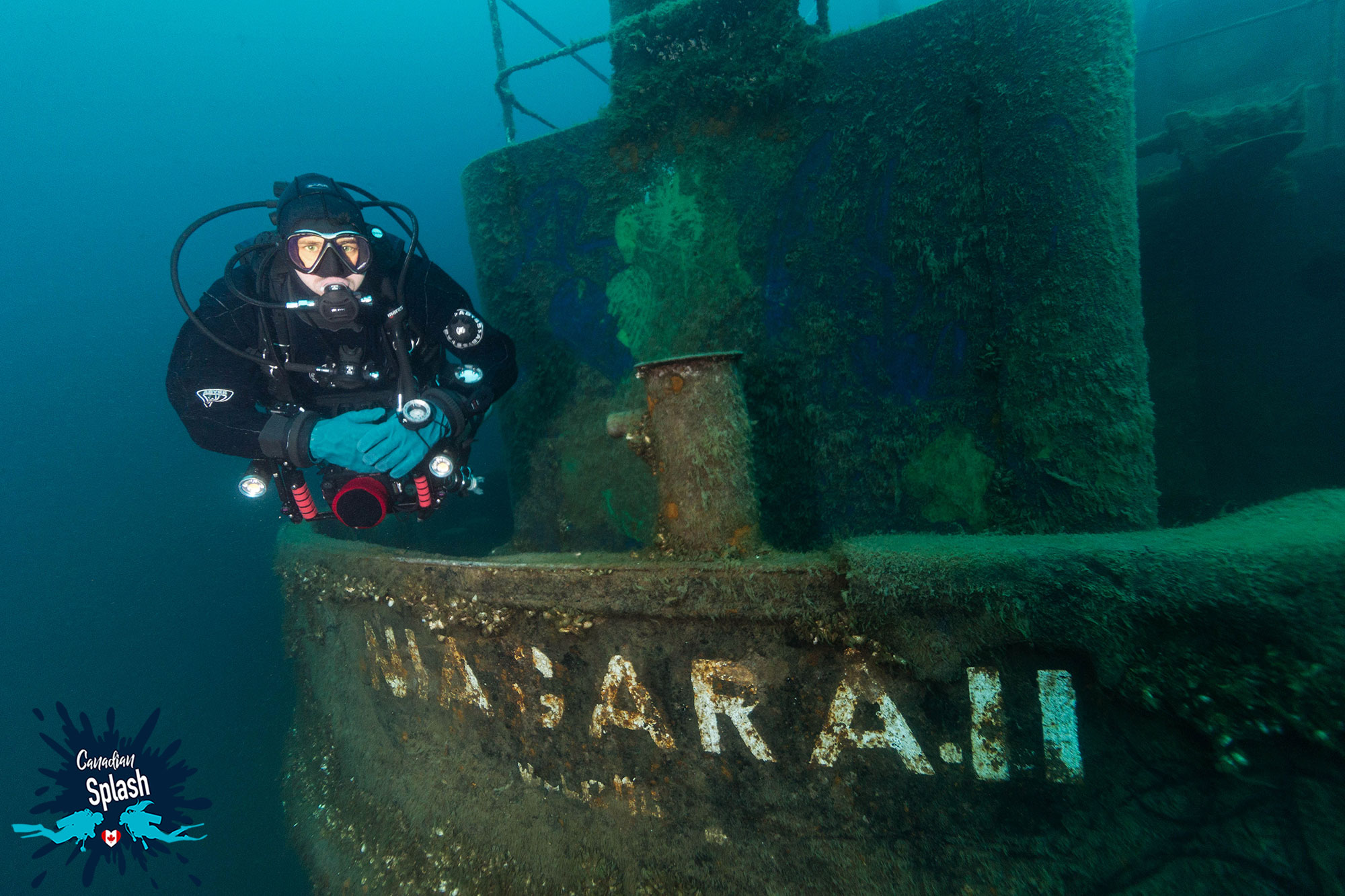
Lake Michigan, the only Great Lake entirely within the United States, offers diverse and thrilling diving experiences, particularly for those fascinated by shipwrecks. With its vast waters bordered by Michigan, Wisconsin, Illinois, and Indiana, Lake Michigan boasts 2639 kilometres (1,640 miles) of shoreline featuring sandy beaches, towering dunes, and secluded bays, each providing unique diving opportunities. The lake is home to over 3,000 shipwrecks, each with a story to tell, many dating back to the 1800s. These wrecks are carefully preserved by the cold, fresh waters, which act as a natural time capsule, and by the Michigan Underwater Preserve System, which protects 5957 square kilometres (2,300 square miles) of lake bottom across 12 preserves.
One of the richest areas for wreck diving in Lake Michigan is the Manitou Passage Underwater Preserve, surrounding the Manitou Islands and part of the Sleeping Bear Dunes National Lakeshore. This preserve is a diver’s haven, known for its concentration of wrecks such as the Francisco Morazan, a 75 metre (247-foot) freighter that ran aground in 1960, and the Three Brothers, which sank in 1911 and lies in shallow waters. Other shipwrecks in the area include the Walter L. Frost which offers glimpses into Michigan’s rich maritime history, particularly during the lumber era when many vessels sought refuge from storms in the lee of the islands.
Lake Michigan’s underwater terrain is just as diverse as the many wrecks that lie beneath its surface. The clear, cold waters are ideal for spotting species like trout and salmon, although nutrient level changes have affected some fish populations. Beyond the Manitou Passage, other notable preserves include the Grand Traverse Bay Underwater Preserve, where divers can explore the Metropolis and Yuba schooners, and the West Michigan Underwater Preserve, home to the Ironsides, a Civil War-era iron ore hauler. These preserves, along with glass-bottom boat tours that bring the lake’s stories to life, make Lake Michigan a prime destination for anyone interested in both diving and maritime history.
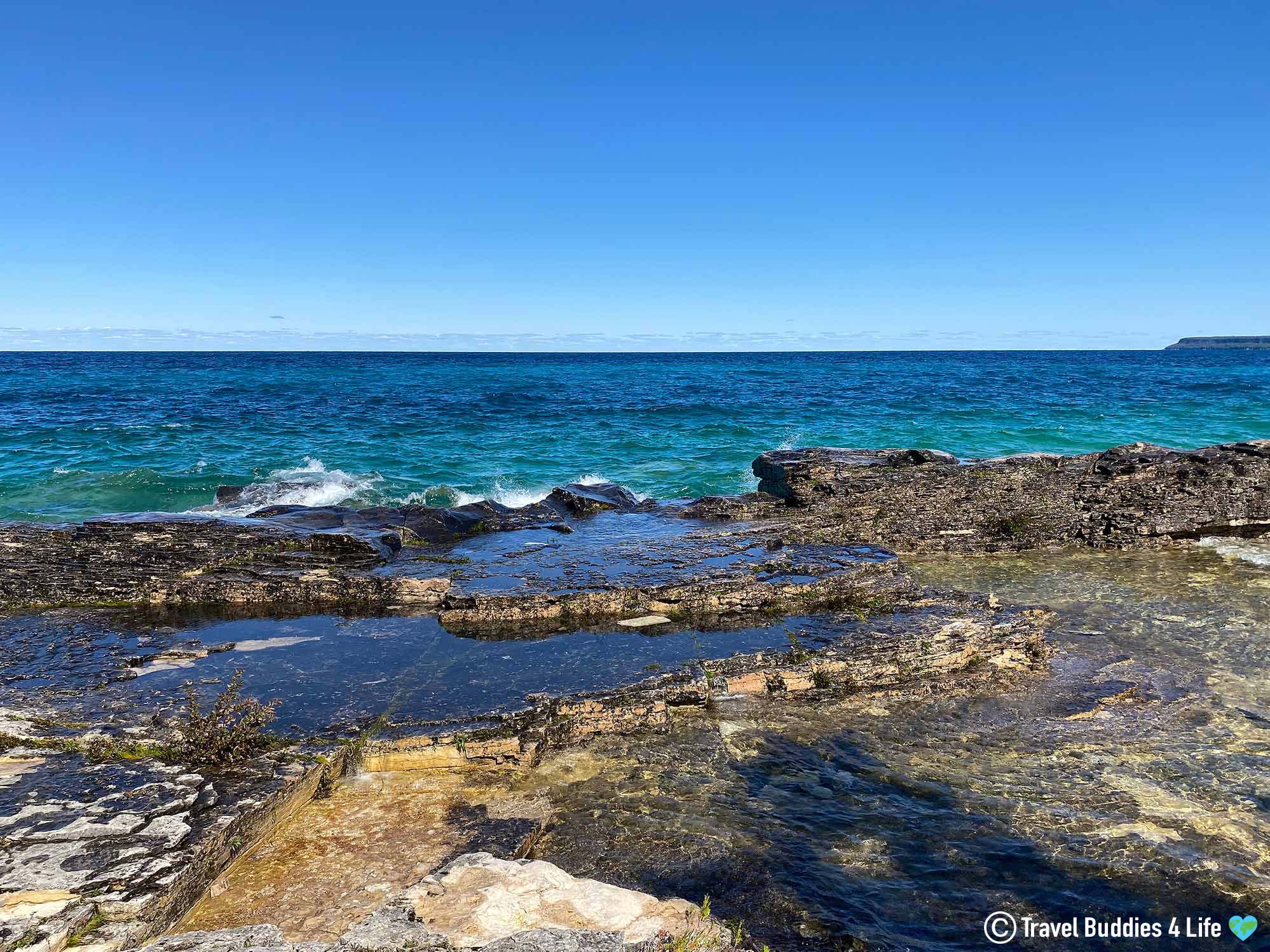
Lake Superior, the northernmost and largest of the Great Lakes, is a spectacular destination for divers seeking adventure in cold, clear waters. Spanning the borders of Minnesota, Wisconsin, Michigan’s Upper Peninsula, and Ontario, Lake Superior boasts over 4,387 kilometres (2,726 miles) of wild and untamed shoreline. The lake’s frigid waters, fed by over 200 rivers, have preserved numerous shipwrecks, making it a premier location for exploring underwater history. Famous wrecks like the SS Edmund Fitzgerald rest in these depths.
Among the lake’s many attractions, Isle Royale stands out as a must-visit for those looking to dive into history. Isle Royale,one of the least visited and most secluded national parks in the United States, is the largest island in Lake Superior and the second-largest island in the Great Lakes. It is located in the remote northwestern waters of Michigan, near the Canadian border.
This island is a haven for hikers, backpackers, and wilderness seekers. But the real draw is the surrounding waters which are home to ten major shipwrecks. These wrecks span seventy years and showcasing the evolution of Great Lakes maritime transportation—from wooden side-paddle steamers to massive steel freighters. Protected by the National Park Service, these wrecks can be explored by experienced divers, offering a unique glimpse into the past.
Beyond Isle Royale, Lake Superior has earned the title of the “graveyard of the Great Lakes” due to the large number of shipwrecks scattered across its depths. Notable dive sites include the US’s Alger Underwater Preserve, where divers can explore wrecks like The Bermuda, The Kiowa, and The Smith Moore—the latter being one of the most famous shipwrecks in the area. In Canada, Thunder Bay has the only dive shop along the coastline. Dives can be done in Pukaskwa National Park, Silver Islet (just outside of Sleeping Giant Provincial Park), Silver Harbour Conservation Area and to a few known wrecks via charter boat from the city.
The conditions for diving in Lake Superior are challenging. The water temperature at the surface rarely exceeds 13°C (55 °F), and below 15 metres (50 feet), it can drop to a bone-chilling 1-3°C (34-37 °F). A full wetsuit is necessary, though a drysuit is highly recommended for deeper dives. Due to the cold, diving in Lake Superior requires caution – cold water increases the possibility of decompression problems and most of the dives in this area tend to be relatively remote. Yet in spite of this, for those seeking an unparalleled cold-water diving experience, Lake Superior’s environment, rich history, and fascinating underwater treasures make it a must-visit destination for divers from around the world.
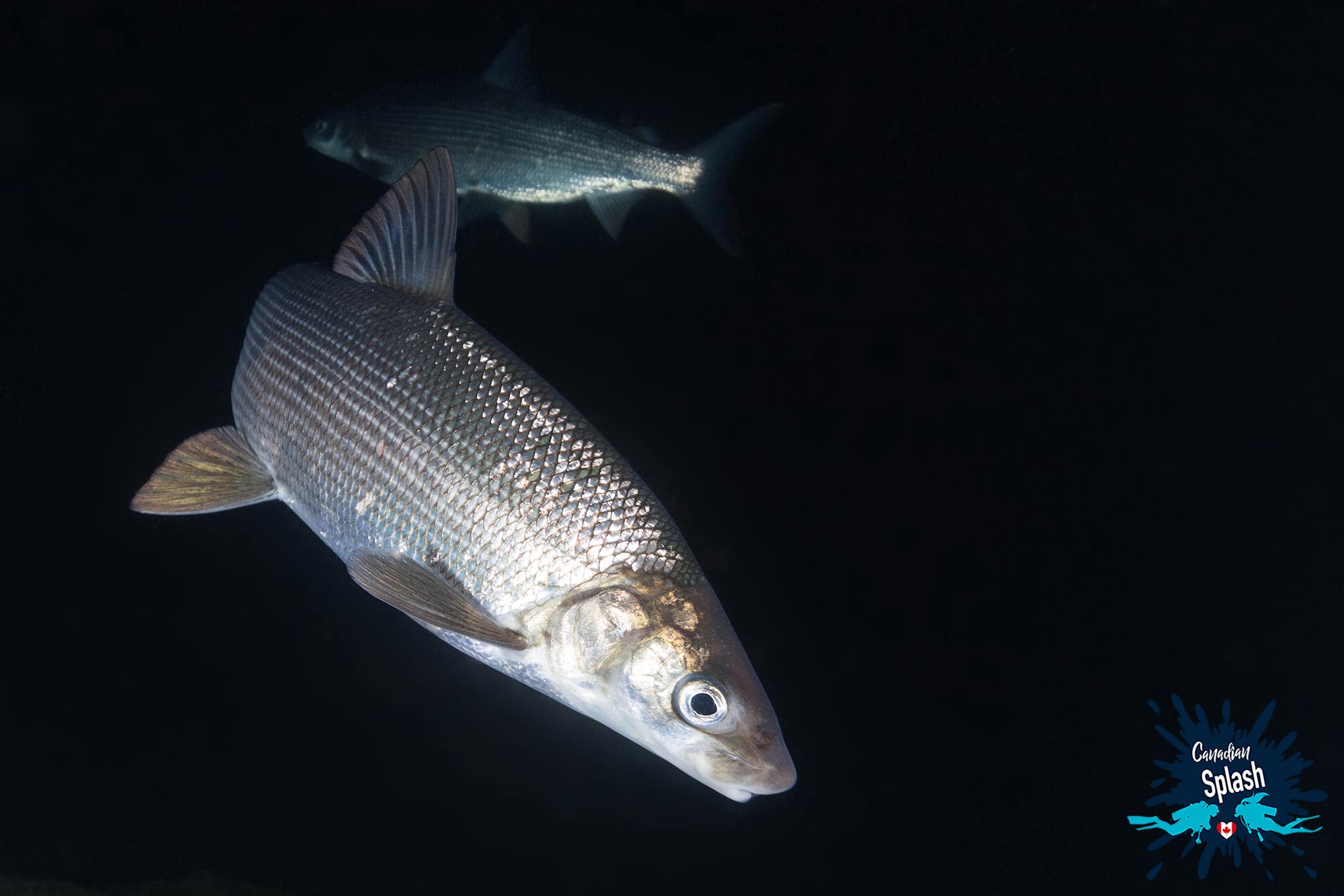
Exploring the Great Lakes can be as breathtaking as discovering exotic dive sites halfway across the world. These lakes offer some of North America’s most intriguing diving opportunities, with well-preserved shipwrecks, diverse aquatic life, and unreal submerged landscapes. The Great Lakes are accessible and affordable, with reasonable travel costs and a wealth of land-based activities to complement your diving adventures. More than just vast bodies of freshwater—the Great Lakes are a scuba diver’s paradise, offering beauty, history and diverse diving experiences all jumbled together.
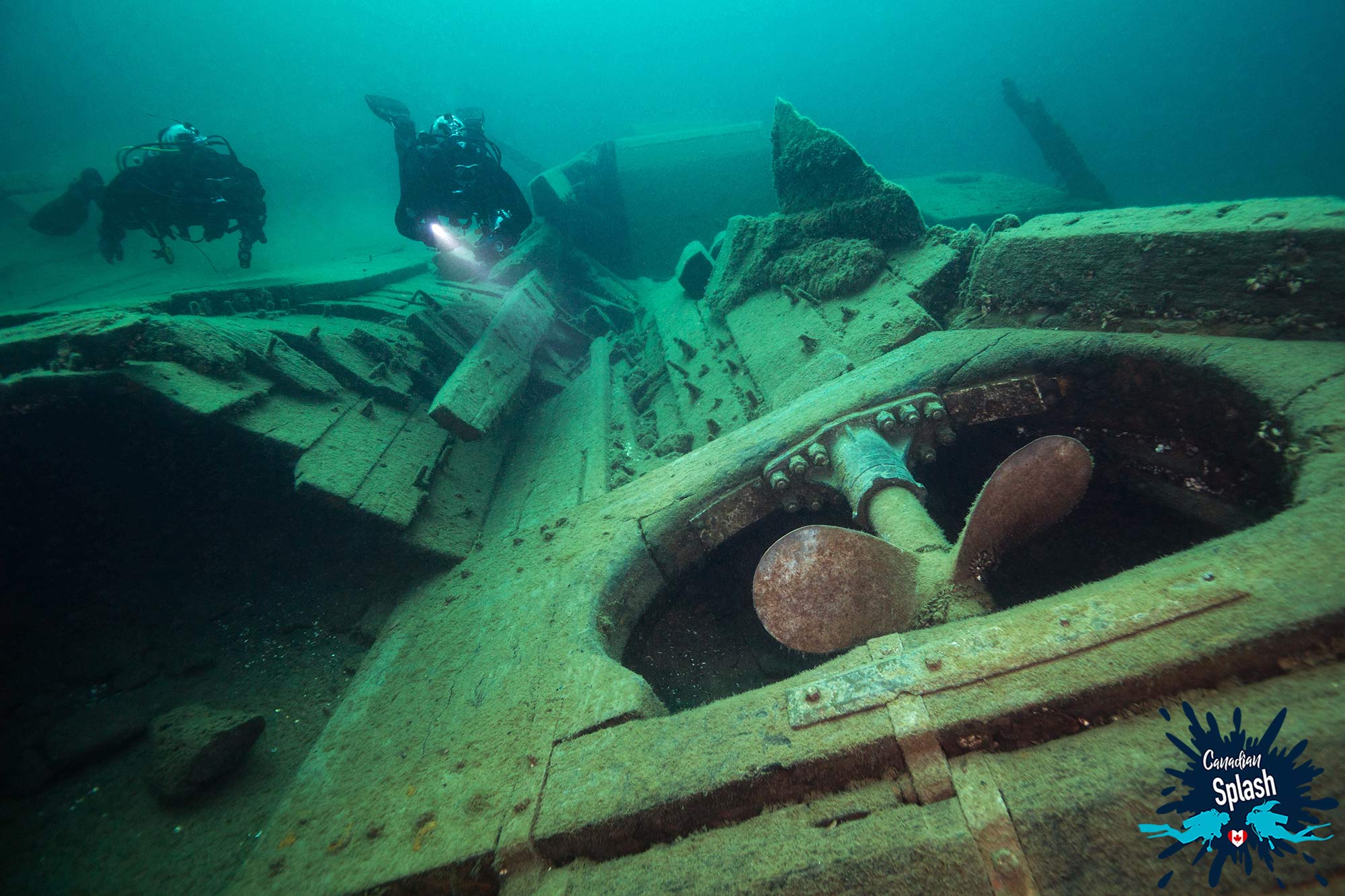
Have you been to one of the Great Lakes? If so did you visit on the US or Canadian side and how did you like your adventure?
Writers Note: This post may contain affiliate links. We will make a small commission if you make a purchase through one of these links, at no extra cost to you. See full disclosure and disclaimer policy here.


Lake Superior is home to a smorgasbord of fish both big and small. Under the right season spotting fish aggregations are a real possibility.
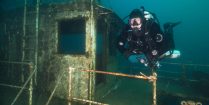
Dive into Ontario's wreck junkie heaven. Tobermory's clear water and abundance of shipwrecks make it one of the top dive sites in Canada and the world.
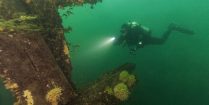
From age-old shipwrecks to lukewarm water, the Saint Lawrence Seaway is considered one of the go-to diving destinations in Ontario.

When it comes to getting outside and immersed in nature, Ontario Parks is at the top of the list. Not only do the parks boast magnificent nature, but it's hundreds of thousands of lakes make it a real treat for those who love the water.
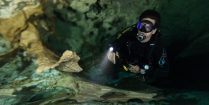
Thermoclines are layers of water determined by temperature. They exist in all lakes and oceans, dividing the sunlit upper layer from the cooler water below.

Whether you’re scuba diving in cold or warm water, in the sunny tropics, or the icy Arctic, being chilly on a dive is never fun.
